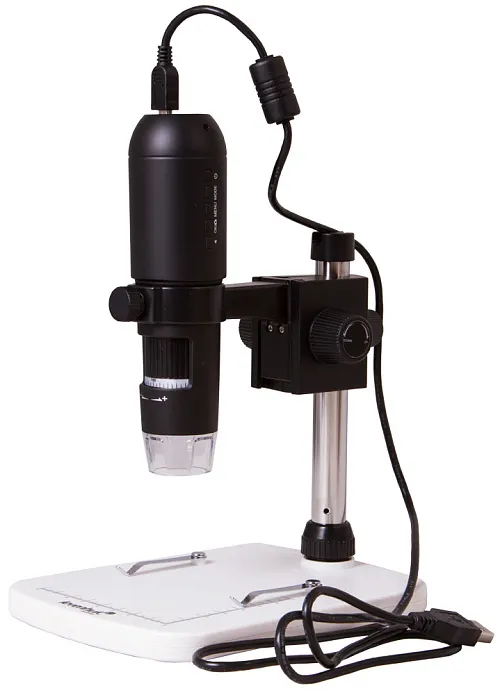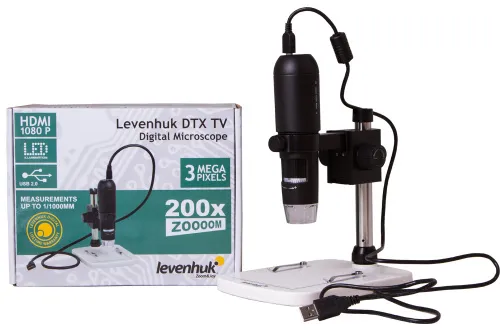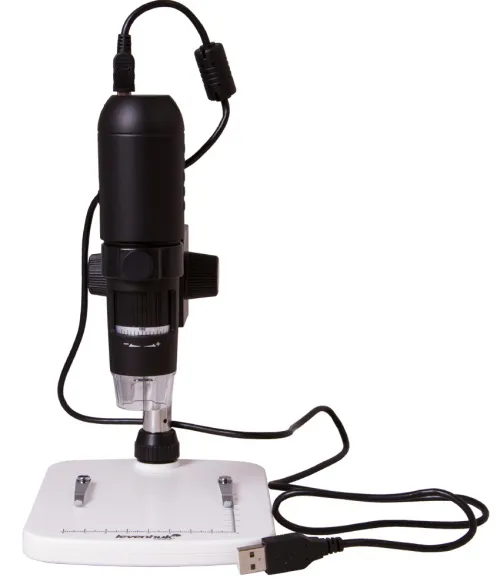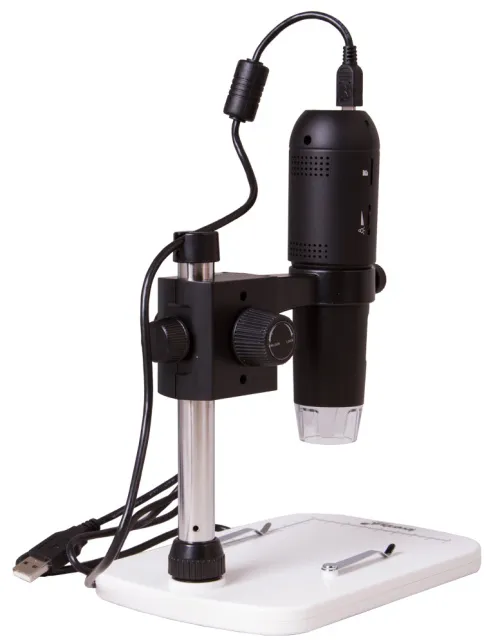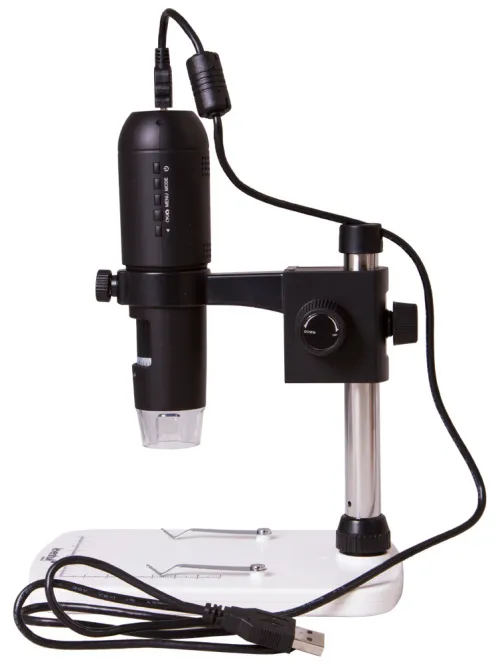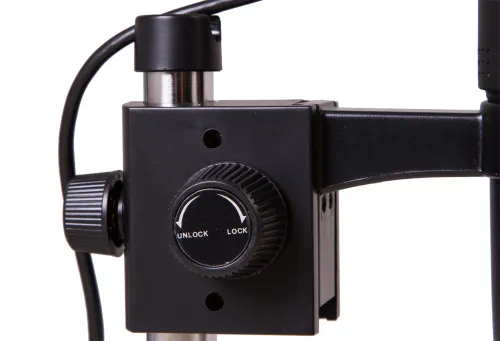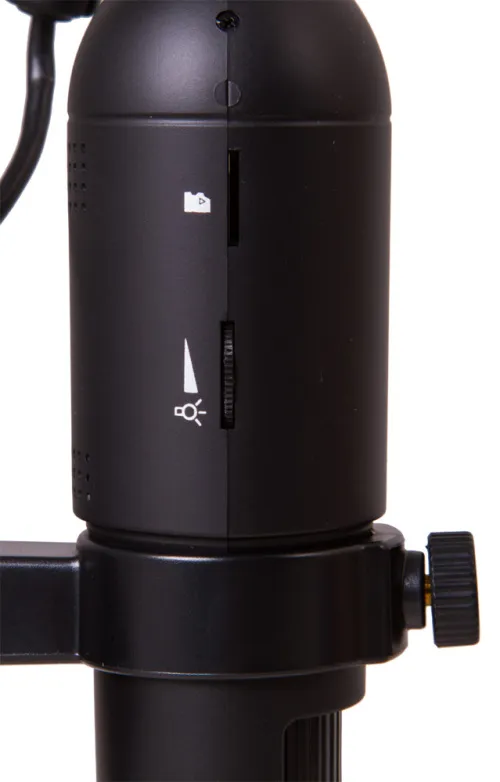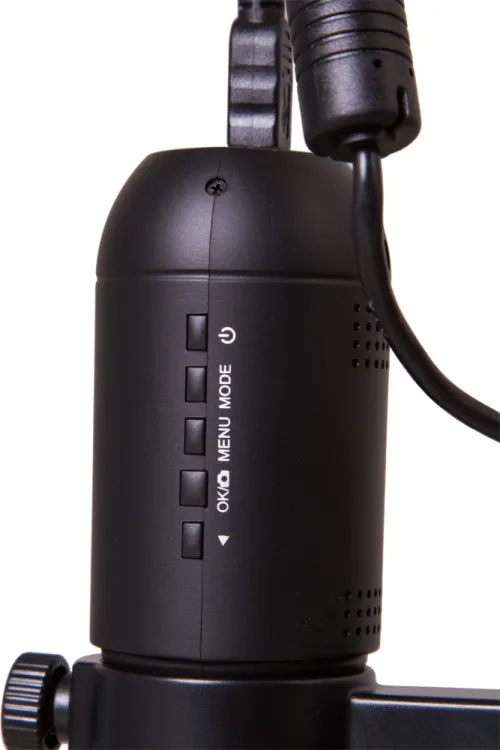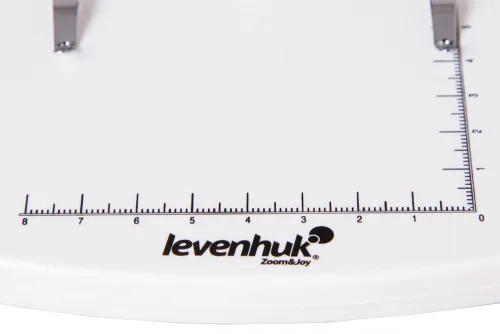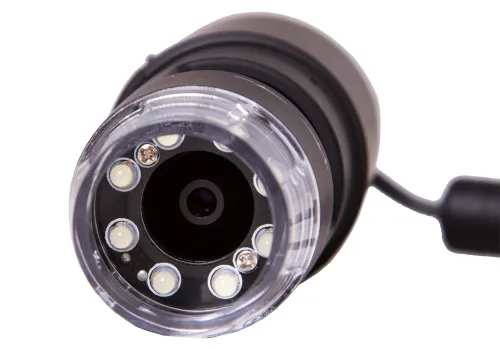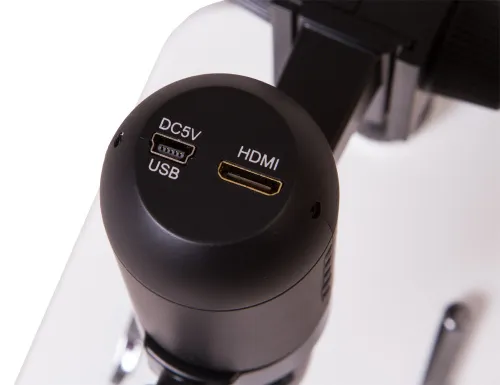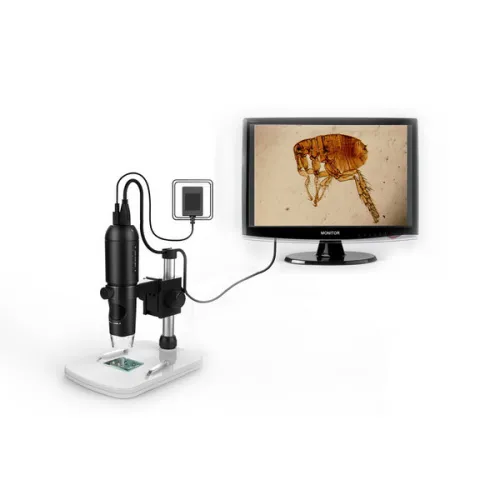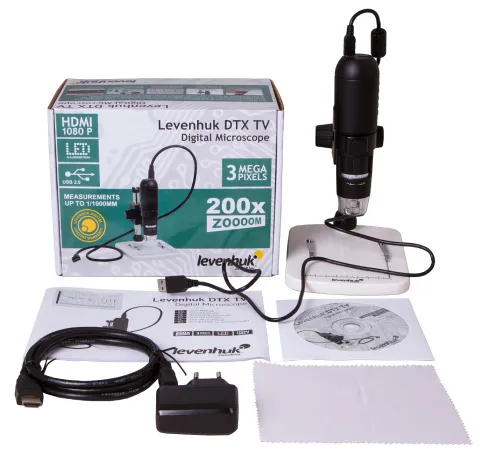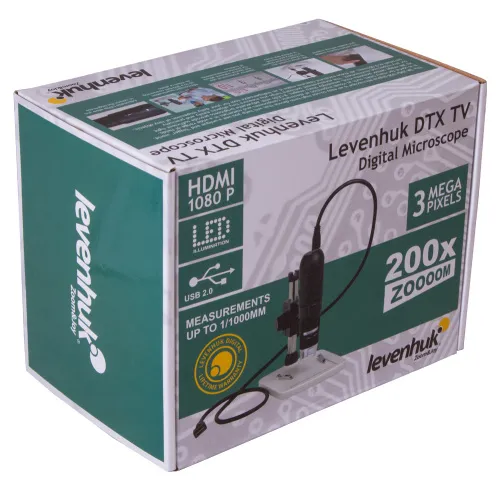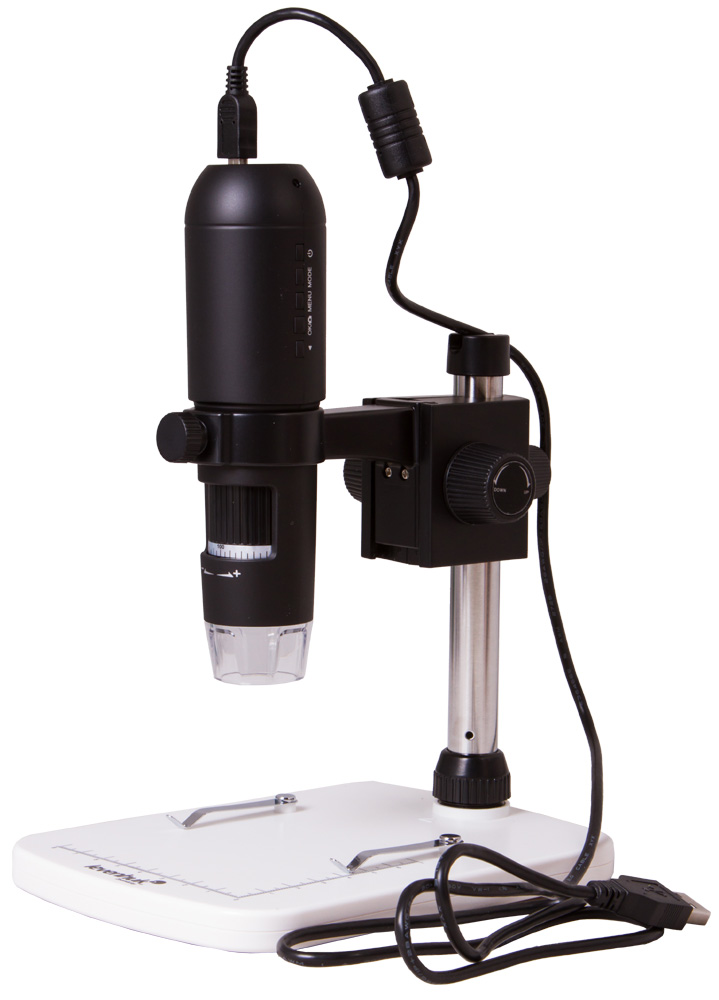Levenhuk DTX TV Digital Microscope
Magnification: 10–200x. Digital USB microscope with a stand and 3Mpx digital camera
| Product ID | 70422 |
| Brand | Levenhuk, Inc., USA |
| Warranty | lifetime |
| EAN | 5905555004358 |
| Package size (LxWxH) | 14x22x17 cm |
| Shipping Weight | 1.05 kg |
Levenhuk DTX TV is a digital microscope with an option to view studied samples on a PC or TV screen (the external screen must have an HDMI connector). This microscope will come in handy for presentations, lectures, and seminars: You can display images and show the steps of working with specimens.
The microscope has smooth variable magnification that ranges from 10 to 200x. At low magnification, you can use the microscope as a digital magnifier to view small prints and illustrations. At high magnification, you can examine biological specimens or the structure of minerals. The microscope has 8 built-in bright LEDs so you can study samples even in complete darkness. It is recommended to mount the microscope on a tripod to get the sharpest images.
The microscope connects to a PC via a standard USB cable. To access all the options of the microscope, including image processing, it is necessary to install special software (included). The software can be used for taking pictures of samples, recording, changing the image size, contrast and brightness adjustments, and taking sample measurements.
The Levenhuk DTX TV Digital Microscope is a simple microscope that requires no special skills or training, which makes it a great tool for home use, education, or a hobby.
Features:
- Digital microscope
- Can be connected to a PC or TV
- Built-in LED illumination
- Convenient stand
- Digital camera resolution – 3 Mpx
- Necessary cables and software included
The kit includes:
- Digital microscope
- Stand
- Adapter*
- USB cable
- HDMI cable
- Calibrating scale
- Software CD
- User manual and lifetime warranty
Recommendations on using the software:
In order for the program to operate correctly, please launch the installed application only when your microscope is connected to a PC and ready for observations.
Levenhuk DTX TV Digital Microscope is not compatible with external digital cameras.
Caution: Please refer to the specifications table for the correct mains voltage and never attempt to plug a 110V device into 220V outlet and vice versa without using a converter. Remember that mains voltage in the U.S. and Canada is 110V and 220–240V in most European countries.
| Product ID | 70422 |
| Brand | Levenhuk, Inc., USA |
| Warranty | lifetime |
| EAN | 5905555004358 |
| Package size (LxWxH) | 14x22x17 cm |
| Shipping Weight | 1.05 kg |
| Type | digital |
| Microscope head type | digital screen/PC monitor |
| Optics material | optical polymer glass |
| Magnification, x | 10 — 200 |
| Stage, mm | 120x165 |
| Stage moving range, mm | fixed |
| Stage features | with a measuring scale, with clips |
| Focus | manual, 10–50mm |
| Body | plastic |
| Illumination | LED |
| Brightness adjustment | ✓ |
| Power supply | 100–240V, 50/60Hz, 5V |
| Operating temperature range, °C | -5...+50 |
| Additional | 8 LEDs |
| Ability to connect additional equipment | supports microSD memory cards up to 32GB (not included) |
| User level | beginners, experienced users |
| Assembly and installation difficulty level | easy |
| Application | for applied research |
| Illumination location | upper |
| Research method | bright field |
| Megapixels | 3 |
| Video recording | yes |
| Image format | *. jpg, 14M, 8M, 5M, 3M, 2M, WVGA |
| Video format | HDMI: *. h264; USB: *. mjpeg; 1080p Full HD, 720p, VGA |
| Frame rate | 30 frames per second |
| Software, drivers | photo and video capture and processing software with measurement function |
| Output | HDMI, microSD card slot, mini-USB |
| System requirements | OS Windows 7/8/10, Mac 10.7~10.14; 1.8GHz Intel P4 and above, RAM 512 MB, video card 64MB, USB 2.0, CD-ROM, monitor with HDMI input |
and downloads
We have gathered answers to the most frequently asked questions to help you sort things out
Find out why studying eyes under a microscope is entertaining; how insects’ and arachnids’ eyes differ and what the best way is to observe such an interesting specimen
Read this review to learn how to observe human hair, what different hair looks like under a microscope and what magnification is required for observations
Learn what a numerical aperture is and how to choose a suitable objective lens for your microscope here
Learn what a spider looks like under microscope, when the best time is to take photos of it, how to study it properly at magnification and more interesting facts about observing insects and arachnids
This review for beginner explorers of the micro world introduces you to the optical, illuminating and mechanical parts of a microscope and their functions
Short article about Paramecium caudatum - a microorganism that is interesting to observe through any microscope

